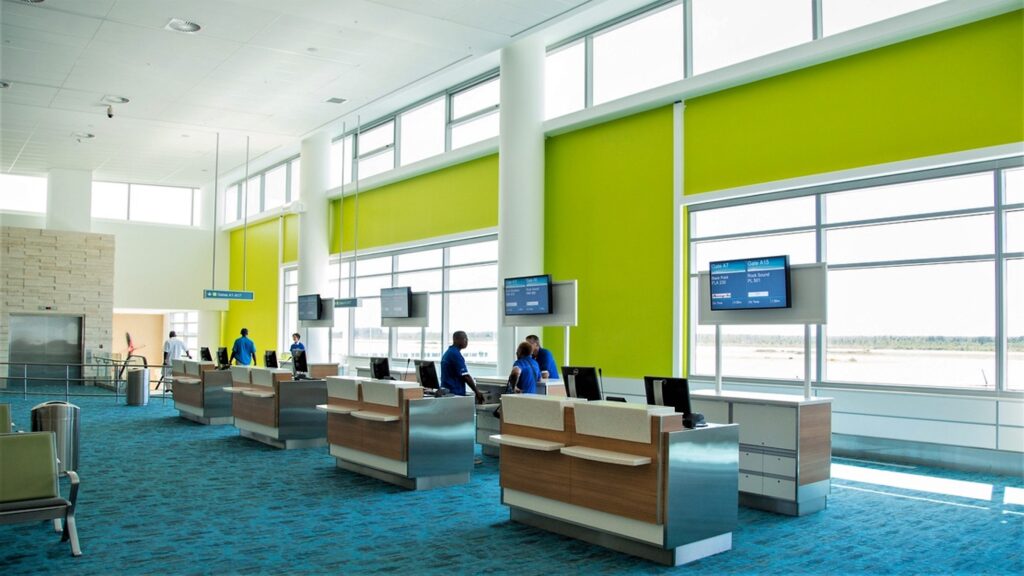Interview: Jonathan Hanna, Director of Operations, Nassau Airport Development Company
Sev Fevzi
June 8, 2022

|
In the fourth of her ‘Interview’ series for IR Pulse on customer experience, Modalis associate Sevda Fevzi talks to Jonathan Hanna, Director of Operations at the Nassau Airport Development Company (NAD) which oversees the management of Lynden Pindling International Airport (NAS) in the Bahamas. |
Jonathan Hanna has more than 10 years experience in operations and since 2014 he has worked at the Nassau Airport Development Company (NAD) which runs Lynden Pindling International Airport (BHS) in the idyllic location of Nassau, the capital of the Bahamas. In April 2020 he was promoted to Director of Operations.
Hanna graduated from the Florida Institute of Technology in Melbourne on the Space Coast, with a degree in Aviation Management and a master’s in Airport Development & Management. In 2012, while working as an operations manager with a fleet of general aviation and light aircraft, he earned his Federal Aviation Administration (FAA) Dispatcher’s License through a scholarship with the National Business Aviation Association (NBAA).

Hanna: “Through the terminal design, we got a great opportunity to really instill a local sense of place.”
At NAD, he has worked in a number of capacities from airside to terminal operations. Since 2013, he has overseen ACI’s ASQ program and implemented several solutions and best practices to enhance the customer experience (CX) at the airport.
Here, Hanna discusses the keys to staff and passenger engagement and the future of CX.
Nassau is the fourth busiest airport in the Caribbean. What does the gateway do best when it comes to providing a memorable experience for its passenger?
Culturally, Bahamians are truly proud people and we love to show off our beautiful islands to our visitors. A few years ago, we went through a major redevelopment process renovating our existing facilities to bring them up to the world-class standards we wanted to be known for. Through the terminal design, we got a great opportunity to really instill a local ‘sense of place’ so there’s no question where you are when you arrive at the Lynden Pindling International Airport (NAS) – you know you’re in The Bahamas!
What was it about the design that gives passengers that all-important sense of place?
In the terminal there are lots of glass walls and panels that allow for natural light to enter the building as we get over 300 days of sunshine every year. The varying shades of blue in the carpet mimic the warm turquoise waters of the Bahamas and we even have bits of conch shell embedded in terrazzo flooring throughout our check-in halls. These features, coupled with the rhythmic beat of local Bahamian music and the vibrant artwork displayed throughout all of the terminals, create an ambiance that we believe is second to none.
And across internal departments, what is the best way to develop awareness to ensure customer experience success?
It is important to start with the ‘why’ when working toward a shared goal. Most people have a challenge with connecting that ‘why’ to customer service but in an airport environment, almost everything can be tied back to the customer. A failure to change a light bulb, a long queue, dodgy internet all affect customer experience in one way, shape or form. Establishing a foundation that focuses on two questions: Why are we here? and Whom do we serve? is critical to solving this issue and also helps with staff engagement. Ensuring that staff are constantly engaged helps them to remain committed to providing that quality service we all strive to achieve.
How do you achieve that level of engagement?
This can be accomplished through employee surveys and frequent meetings with staff to underscore the importance of engagement as well as understand and respond to any challenges they may be facing. You can’t manage what you don’t measure, and it is critical that you have data to share with the relevant departments through feedback surveys/devices etc. to ensure a continuous improvement process. Customer service is quite dynamic in nature and we have to regularly monitor and identify challenges and provide solutions in order to have a great customer experience program.
During the era of COVID, did the fundamentals of customer experience change, and what has that meant for the way you operate now?
Passenger expectations are now different than they were two years ago prior to the start of the pandemic. Passengers are now focused, more than ever, on overall cleanliness and hygienic measures; having access to updated/real time travel information (which is now key as a result of ever-changing travel requirements); and wanting to have more opportunities to control their respective journeys.
In terms of our present-day operations, like many other airports, we had to adapt quickly to put the necessary health mitigations in place to keep airport users safe. These included: increased cleaning and disinfection throughout the facility; the implementation of physical barriers; increased hand sanitizer stations; and a host of other mitigations. This was critical as we saw the bottom fall out from the industry, so we worked extremely hard as an industry (in line with our hotel and tourism partners) to re-instil confidence in the travelling public.
As traffic improves how is your CX focus shifting?
Moving into the future, we are looking at investing in new technology (such as biometrics, common-use kiosks that can be controlled from a passenger’s smartphone etc.) that would allow for a more contactless and passenger-friendly journey. Not only have the data shown that passengers are happier – and passenger satisfaction is shown to have a direct correlation to increased revenue – but we are also able to increase the overall level of efficiency while ensuring that we are more resilient to future pandemics.
What about non-aeronautical revenue streams – do you think there is scope for the business model to change?
COVID has forced us to go back to the drawing board and I believe that as we emerge from the pandemic, there will be even greater focus on non-aeronautical revenue streams and, to some degree, that is already happening.
Over the last few years, millennials have quietly become the generation that travels the most and are willing to spend considerably on vacation as they look for different airport experiences. Millennials want more of a personalized journey and value experiences more than tangible items.
How does that work in practical terms?
It presents new opportunities for airports to explore. For example, pop-up events; purchasing of duty-free online and having it waiting for you at your gate versus having to shop in traditional brick-and-mortar locations. Additionally, there is an opportunity to provide more value to existing non-aeronautical revenue streams by, for example, having your car washed while you’re away on vacation and coming back to a clean car. These are just a few examples of untapped opportunities for airports to further explore.
So airports need to get more creative?
Airports will be forced to tap into innovative ideas because, as we have all seen over the past two years, relying on traditional aeronautical streams of revenue can be detrimental especially if there are significant world events that prohibit travel.
Many travellers are still nervous. What would you recommend to other airport leaders in terms of rebuilding passenger confidence to keep CX elevated?
Even prior to the pandemic, travelling for some was an anxiety-inducing experience and that has become even more of an issue as a result of COVID. There are a number of ways that airports can ease that burden and restore confidence:
Communication – Some people have not travelled in two years or more. Having a central place where passengers can access critical information such as entry and testing protocols helps to reassure them ahead of their journey and ease anxiety. In addition to communicating the travel protocols, it is important to explain what the airport is doing to keep passengers and airport users safe through social media, radio or television.
Feedback Tools – These enable us to listen to the voice of the passengers. As I said before, CX is dynamic and what worked this morning may not work this afternoon. In airports, we need to respond in real time to any concerns that have the potential to negatively impact the user experience.
Get Creative! – Customer experience isn’t an exact science and while a lot of data are out there to help guide decision making, ultimately we need to think outside the box and change our mindsets a bit to how we approach CX. What I have found that works well is creating a diverse group of people and getting in a room (or virtually) and collaboratively exploring ways to improve the customer experience. You’d be surprised at some of the great ideas that a group can come up with in a short space of time.


